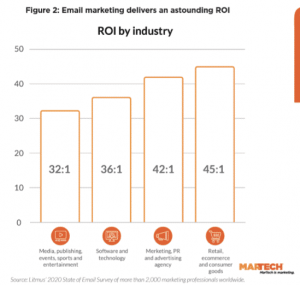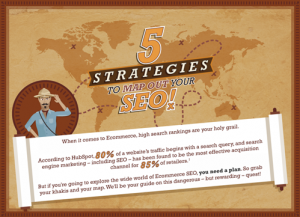— December 19, 2017

cuncon / Pixabay
Every brand wants to be cool, but the reality is, brands don’t need to be “cool” anymore. They just need to be honest and authentic. Forget trying to elbow your way into the hip conversation, skateboard and backwards hat in tow. Just be yourself. If your brand is nerdy, own it. If your brand is bougie, own it. That extends to every piece of content you create, especially when it comes to infographic marketing.
But that doesn’t mean you can just do whatever you want in infographics. You can’t just slap words and pictures together and assume people will automatically be into it. Infographic marketing isn’t advertising. You aren’t shouting at people about who you are. You’re introducing yourself and starting to build a relationship. Authenticity is the key to help you do that.
So, How Do You Stay Authentic in Your Infographic Marketing?
Be aware of how you approach every aspect of your infographic marketing, from ideas to design. To make sure you’re keeping it real, follow these 7 tips.
1) Don’t Go with Your First Idea
This seems like generic advice, but it’s especially true for infographic marketing.
Here’s how we’ve seen a lot of brainstorms go: A suitcase brand realizes they need an infographic for the holiday season. After a 2-second word association, they decide on “10 tips to pack for the holiday season” and call it a day. Halfway through design, they may do a quick Google search and realize that there are already 10 identical infographics in the world—some by their direct competitors—but they’re halfway through design, so they forge on ahead. Unsurprisingly, the infographic doesn’t get much traffic.
Why? Because your first idea is usually your most generic. It’s at the top of the pile, and it’s not only too easy but probably not very interesting. When you produce these types of infographics, you aren’t making a genuine impact with people. You’re saying you’re just like everyone else lining up for their business. It’s a waste of everyone’s time.
Tip: Try these 16 ways to come up with more exciting ideas that let you showcase who you are and what you’re about.
2) Find Out What People Want
Sometimes you come up with a great idea that you just love—but it doesn’t necessarily relate to the people you want to reach. To really make an impact, you need to get inside their heads and understand what it is they need or want—and how you can create content that provides it. (If you want them to be interested in you, you need to prove you’re interested in them.)
One of the best ways to do this is to go old school: actually talk to them. Use surveys, conversations, Twitter polls, etc. to find out what subjects they’re interested in, what problems they’re looking to solve, etc.
Tip: Once you do talk to the people you’re trying to reach, create personas and use those personas to vet your ideas.
3) Don’t Get Cute
Infographics are fun because you get to make the most of your words and design. And infographics are useful because they make information easier to understand. But getting too cute or clever makes you lose connection with your reader.
For example, we often see infographic headers that feature “fun” puns. (And, yes, we’ve been guilty of these, too.) But remember that people don’t have time to waste in trying to decipher your clever phrase. Which title is more interesting to you: “Holiday Havoc!” or “How to Avoid the Most-Traveled Airports This Holiday Season”? Exactly.
Tip: Always go with the clearest, most direct phrasing.
4) Get to the Point
One of the most common infographic marketing mistakes is telling a convoluted story that is difficult to untangle or goes on forever. The same goes for infographics with data. Spoiler: A splatter of statistics is not a meaningful story. You need to extract relevant insights and present them in an effective way.
The whole point of visual communication is to communicate content quickly and efficiently so that your reader can get their info and get on with their day. Distilling this information for them is an authentic gesture that shows them you respect their time and are genuinely interested in helping them.
Tip: If you have a ton of content, consider breaking it up into an infographic series.
5) Kill Your Buzzwords
This might be our biggest pet peeve of all time. (We even made a marketing gibberish generator just to prove how annoying buzzwords are.) You want to speak to people at their level, but don’t drown them in acronyms and corporate speak to prove your authority. It’s the true antithesis of human authenticity.
6) Use Appropriate Sources
If your infographic contains data, it better be from an appropriate source. Using shady or incomplete sources is a great way to make people suspicious of your credibility. If you want people to trust you, use sources that are:
- Unbiased: Government agencies, industry white papers, surveys conducted by reputable organizations, or academic publications are more reliable sources.
- Timely: Use only the most recent research (ideally published within two years).
- Limited: If you have 12 sources, you have a problem.
- Complete: Don’t cherry pick stats from different data sets.
- Cited appropriately: Always include your source.
7) Make Design Match the Story
Design can go along way to enhance your story and improve comprehension. But it can also overshadow the story, particularly if the design is inappropriate or irrelevant to the topic. (We’ve seen plenty of infographics about serious subjects diminished by childlike illustrations or Comic Sans.) Also, remember that your brand is making an infographic; you are not creating a branded infographic. Translation: Don’t add your logo in 5 places. (Yes, that’s actually happened.)
Don’t Forget Your Brand Guidelines
So much of your authenticity is communicated through your brand voice and visual language. Creating consistent content that showcases these elements will help readers identify and connect to your content more effectively.
Digital & Social Articles on Business 2 Community
(61)






